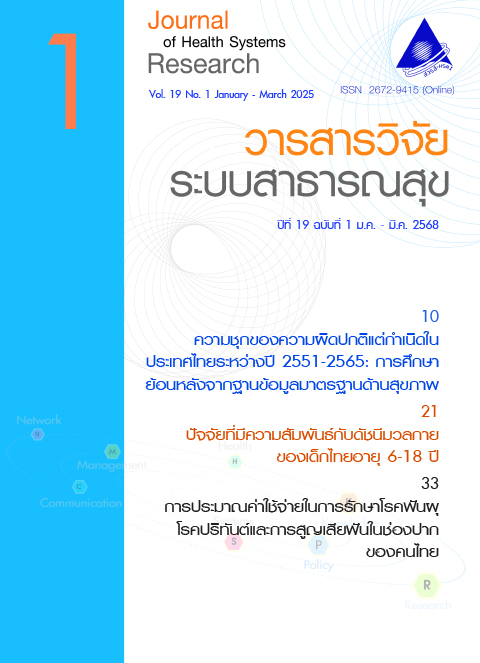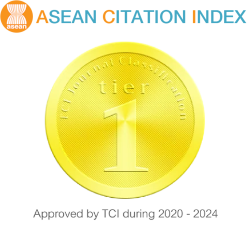Service-Information-Finance: The Three Pillars of Successful Universal Health Coverage Implementation
Abstract
Introduction
Achieving universal health coverage (UHC) is a critical global goal that enables all individuals to access quality health services without financial hardship. However, as many countries work toward this ambition, a key realization has emerged: successful UHC implementation requires the harmonious integration of three key pillars—health service delivery, health information systems and health financing. These components form the "Service-Information-Finance (SIF) framework," which emphasizes the critical interdependence of these health system building blocks.(1)
Three Prongs of UHC
The analogy of a "three-legged stool" effectively conveys the importance of these foundational components. Each "leg" is essential to maintain balance and stability:
- Service delivery systems: The cornerstone of health systems, service delivery ensures that quality healthcare reaches all populations equitably. This includes robust healthcare infrastructure, adequately trained workforce, and the availability of essential medical products, vaccines, and technologies.(2)
- Information systems: Informed decision-making and effective management rely on accurate and timely health data. Information systems serve as the backbone for monitoring health outcomes, assessing system performance, and enabling evidence-based policy formulation.(3,4)
- Financing systems: Sustainable health financing underpins UHC by reducing out-of-pocket expenses, pooling resources, and ensuring equity in health access. It enables governments to provide comprehensive healthcare services while protecting citizens from financial risk.(5)
The Need for Simultaneous Development
One of the key lessons learned in UHC implementation is the necessity for these three components to be developed concurrently rather than in isolation.(2) In many instances, health system reforms focus on one area at a time, leading to misaligned priorities, inefficiencies, or gaps in service delivery. For example:
- Service Delivery Without Data: Investing heavily in expanding healthcare infrastructure without integrating effective information systems can result in inefficiencies, as decision-makers lack the insights needed to allocate resources optimally or monitor progress.(2)
- Data Without Financing: An information system is only as impactful as the financing mechanisms supporting its use. Without financial backing, innovative data solutions may remain underutilized(5)
- Financing Without Service Delivery: Strong financial mechanisms, the absence of accessible and quality services limits the impact on population health.(5)
Thus, the SIF framework emphasizes the interconnect of these pillars, which must operate in synergy to achieve long-term UHC success. (Figure 1 as shown in PDF file)
Beyond the Core Pillars: Leadership and Governance, Workforce and Medical products
While the three primary components form the foundation of the SIF framework, additional elements such as leadership and governance, healthcare workforce, and medical products play indispensable roles. Leadership ensures vision, coordination, and accountability, while governance establishes the policies and regulatory environments necessary for health systems to thrive. A skilled and adequately distributed healthcare workforce is crucial to translating policy into action, delivering services, and supporting the functionality of information and financing systems. Moreover, the availability of medical products, vaccines, and technologies complements the three core components, ensuring that health systems can respond effectively to emerging health challenges.(6)
Real-World Applications of the SIF Framework
Countries that have embraced the SIF framework demonstrate the benefits of this integrated approach:
Taiwan: Taiwan stands out as another excellent example of UHC success through the efficient integration of all three pillars. Taiwan's National Health Insurance (NHI), implemented in 1995, has developed a health service system that covers over 99.9% of the population, a fee-for-service payment system with cost control measures, and a modern health information system. The use of the NHI IC Card enables patient health information to be linked between healthcare facilities nationwide, reducing treatment redundancy and increasing service efficiency. Additionally, the electronic claims system has significantly reduced administrative costs, allowing more budget to be allocated to improving service quality.(7)
Estonia: Leveraging advanced digital health infrastructure, Estonia has created a seamless health information system that supports service delivery and financing. Citizens can access health records digitally, ensuring continuity of care, while the government uses data analytics to optimize resource allocation.(8)
Rwanda: Following a devastating health crisis, Rwanda built an innovative UHC model that combines community-based health insurance, an extensive health workforce, and a robust health information system. This integration has resulted in dramatic improvements in life expectancy and reductions in maternal and child mortality.(9)
Challenges and Opportunities within Thailand Anywhere Primary Care System
Implementing the SIF framework within Thailand current anywhere UHC environments is very challenging. The primary care system must be strengthened as the backbone. With limited level of finance, (10) the strengths of efficient digital health must be exploited to bridge unaligned communications of specialized health systems with primary care systems as seen in the three-country case studies. Apart from the three prongs of UHC, motivated healthcare workforce and good governance leaderships are essential elements for success.
References
World Health Organization. Primary health care on the road to universal health coverage: 2019 monitoring report. Executive summary. Geneva: World Health Organization; 2021. 1 p.
Kieny MP, Evans TG, Scarpetta S, Kelley ET, Klazinga N, Forde I, et al. Delivering quality health services: a global imperative for universal health coverage (English) [Internet]. Washington, D.C.: World Bank Group; 2018 Jul 5 [cited 2025 Mar 12]. Available from: http://documents.worldbank.org/curated/en/482771530290792652.
World Health Organization. World health statistics 2021: monitoring health for the SDGs, Sustainable Development Goals. Geneva: World Health Organization; 2021. 1 p.
World Health Organization. Global Strategy on Digital Health 2020-2025. Geneva: World Health Organization; 2021. 1 p.
World Bank Group. High-performance health financing for universal health coverage [Internet]. Washington, D.C.: World Bank Group; 2019 [cited 2025 Mar 12]. Available from: https://hdl.handle.net/10986/31930.
World Health Organization. Everybody’s business: strengthening health systems to improve health outcomes: WHO’s framework for action [Internet]. Geneva: World Health organization; 2007. Available from: http://www.stoptb.org/cb/meetings/20071023_Berlin_Germany/assets/documents/2.07-4.5%20WHO%20framework%20for%20HSS.pdf.
Cheng TM. Reflections on the 20th anniversary of Taiwan’s single-payer National Health Insurance System. Health Aff (Millwood). 2015;34(3):502–10.
Wilson D, Sheikh A, Görgens M, Ward K; World Bank. Technology and universal health coverage: examining the role of digital health. J Glob Health. 2021 Nov 20;11:16006.
Nyakabau MR. Digital-First Integrated Care: Rwanda’s innovative digital health care service [internet]. Transform Health. 2021 Nov [cited 2025 Mar 12]. Available from: https://transformhealthcoalition.org/insights/digital-first-integrated-care-rwandas-innovative-digital-health-care-service/.
Pannarunothai S. Trend of financing primary care systems. Editorial. Journal of Health Systems Research 2024;18(4):439-41. (in Thai)
Additional Files
Published
How to Cite
Issue
Section
License
Copyright (c) 2025 Journal of Health Systems Research

This work is licensed under a Creative Commons Attribution-NonCommercial-NoDerivatives 4.0 International License.
Journal of Health Systems Research is licensed under a Creative Commons Attribution-NonCommercial-NoDerivatives 4.0 International (CC BY-NC-ND 4.0) license, unless otherwise stated.




